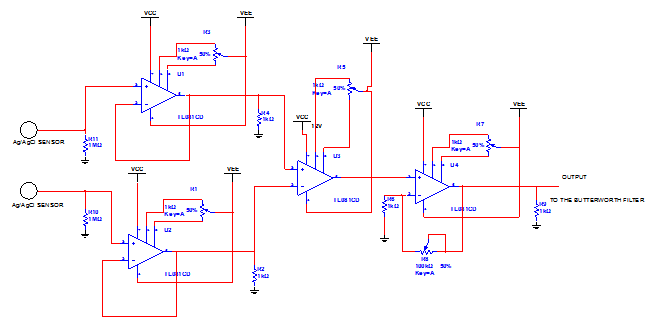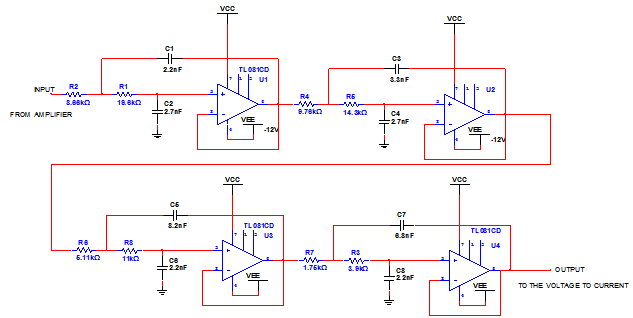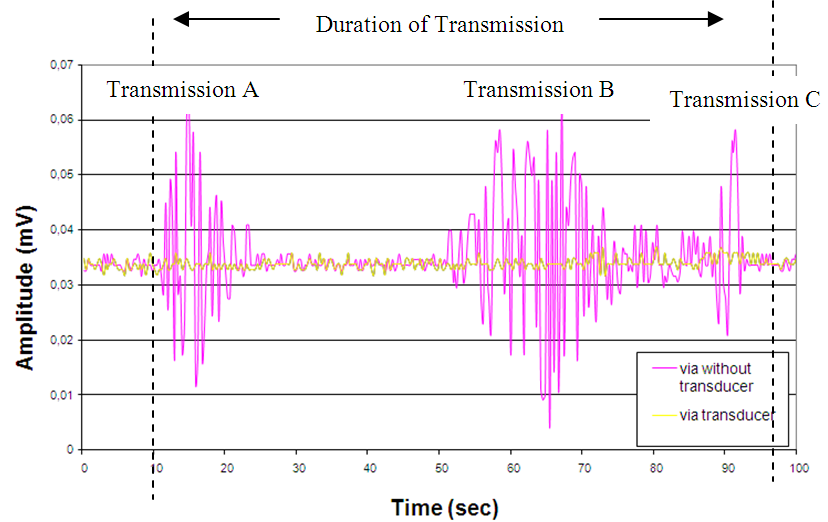-
Paper Information
- Next Paper
- Paper Submission
-
Journal Information
- About This Journal
- Editorial Board
- Current Issue
- Archive
- Author Guidelines
- Contact Us
American Journal of Bioinformatics Research
p-ISSN: 2167-6992 e-ISSN: 2167-6976
2013; 3(2): 21-24
doi:10.5923/j.bioinformatics.20130302.02
Development of Transducer Unit to Transmit Electrical Action Potential of Plants to A Data Acquisition System
Kalovrektis K1, Ganetsos Th2, Antonopoulos J2, Gotsinas A1, N. Y. A Shammas3
1University of Piraeus, Informatics Department, Piraeus, Greece
2Electronics Department, T.E.I. of Lamia, Lamia, Greece
3Staffordshire University, Faculty of Computing, Engineering & Technology, UK
Correspondence to: Ganetsos Th, Electronics Department, T.E.I. of Lamia, Lamia, Greece.
| Email: |  |
Copyright © 2012 Scientific & Academic Publishing. All Rights Reserved.
There is a lot of evidence that plants respond to the alteration of the environmental parameters, particularly with respect to nutrient availability and concomitant changes in partitioning and growth. Extracellular electrical signals that produced from plants have different pattern depending on factors that may cause stress such as water deficiency, nutrient elements shortage, high salinity level in roots environment etc. Due to very low current level of electrical signal of plant’s, the transmission of signal must be without distortion. The objective of this work is the development of a transducer unit to transmit electrical action potential of plants to a data acquisition. This transducer could be used to improve the efficiency of data acquisition system, in order to avoid: a) the white Gaussian noise (WGN), (50 Hz power line noise as well as the noise of the operating electrical devices, operating in any commercial greenhouse), and b) the distortion from RF signals. The results show that electrical action potential measurements on plants, obtained with the use of the design transducer unit had a negligible error in contrast to a direct connection of sensors into data acquisition. The measurements are recorded, via a data acquisition system and processed using LabVIEW code.
Keywords: Signal Condition, Noise, Plant, Action Potential, Chrysanthemum, Sensor, Transducer, Signal
Cite this paper: Kalovrektis K, Ganetsos Th, Antonopoulos J, Gotsinas A, N. Y. A Shammas, Development of Transducer Unit to Transmit Electrical Action Potential of Plants to A Data Acquisition System, American Journal of Bioinformatics Research, Vol. 3 No. 2, 2013, pp. 21-24. doi: 10.5923/j.bioinformatics.20130302.02.
Article Outline
1. Introduction
- There is a lot of evidence that plants respond to the alteration of the environmental parameters, particularly with respect to nutrient availability and concomitant changes in partitioning and growth[1],[2]. Environmental changes caucuses electrical signal which is an essentially critical signal that reflects the responses of a plant to the environmental changes[3] and introduce extracellular electrical phenomena in plants that can be divided in three types: local electrical potential (LEP), action potential (AP) and variation potential (VP). VPs can transmit from the stimulated site to other parts of the plant have been reported in a variety of plant species in response to various stimuli, including light, temperature, humidity, osmotic stress, irrigation, gravistimulation and wounding[4-9]. In accordance a lot of useful information for theoretic and practical applications such as plant’s physiological mechanisms, inspection of greenhouse climate and plant’s root environment can be derived from the characteristics of that signals and contribute to relative intelligent control. Nowadays, almost of all researches on the plant electrical signal, are focused on the relationship between the electrical signal and generative causes (climate or other parameters) as well as the macroscopical physiological effects[10]. Due to very low current level of plant’s electrical signal, the transmission of signal must be without distortion. The aim of this work is the development of a transducer unit to transmit electrical action potential of plants to a data acquisition system reliably without distortion.
2. Materials
- The design of development transducer unit includes three subunits (Fig.1):1) a high sense amplifier2) a Butterworth filter3) a voltage to current converter
 | Figure 1. Block diagram of transducer unit |
 | Figure 2. Interface and amplifier circuit oftransducerunit |
 | Figure 3. 8th order Butterworth filter of transducer unit |
 | Figure 4. Voltage to current circuit of transducer unit |
3. Using Transducer Unit to Transmit Electrical Signals from Plants
- The experiment concerned affect environment noise on the designed transducer unit. For electromagnetic interference (EMI) testing an EMI-RF generator device in distance of 30cm away from Faraday’s Cage (FC) transmit, three power transmission A, B and C (p=100mW) for each testing frequencies: 0.5, 1.3, 2.3 and 3.3 MHz controlled by labVIEW. The electrical potential in plants was measured and recorded in: a) a data logger placed at a distance of 5 meter away from FC, connected direct with Ag/AgCl sensors via a coaxial wire and b) at a distance of 5 meter away from FC via transducer unit to a data acquisition system. During the experiment, electrical potential was measured in leaves of chrysanthemum plants (Chrysanthemum moriflorum) using Ag/AgCl electrodes[12].
 | Figure 5. The experimental system for the measurement of plant’s signal |
 | Figure 6. The effect of EMI testing in transmission of signal via direct connection of sensor to data logger (-) and via transducer unit (-) |
 | Figure 7. Standard deviation of signals by effect of EMI testing |
4. Conclusions
- From the above results, we concluded that:1) The design transducer unit can be used to acquire biosignals of plants in a more effective way than via direct connection of sensors into data acquisition system, since the signal is not affected by the noise of external RF source such as of a typical greenhouse environment, or in an laboratory. 2) By the use of a direct connection of sensors into data acquisition the amplitude of biosignal was affected by about 50% during their acquisition at a distance of 5 m since harmonics distortions caused from the ambient environment resulted to peak voltages signals errors.
 Abstract
Abstract Reference
Reference Full-Text PDF
Full-Text PDF Full-text HTML
Full-text HTML